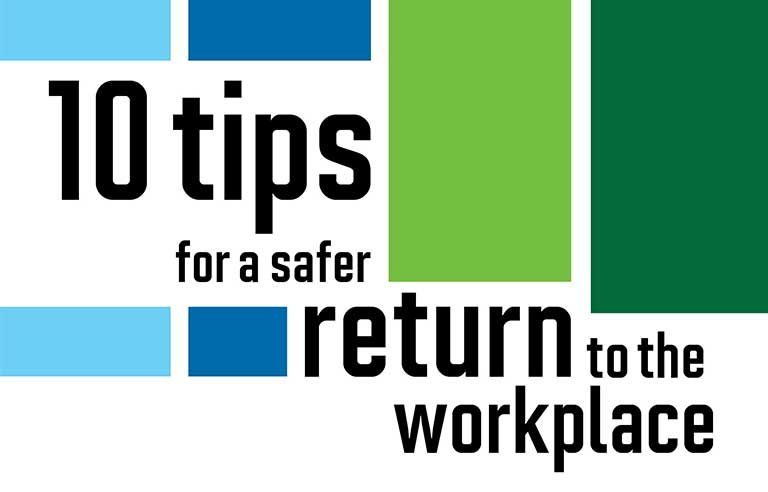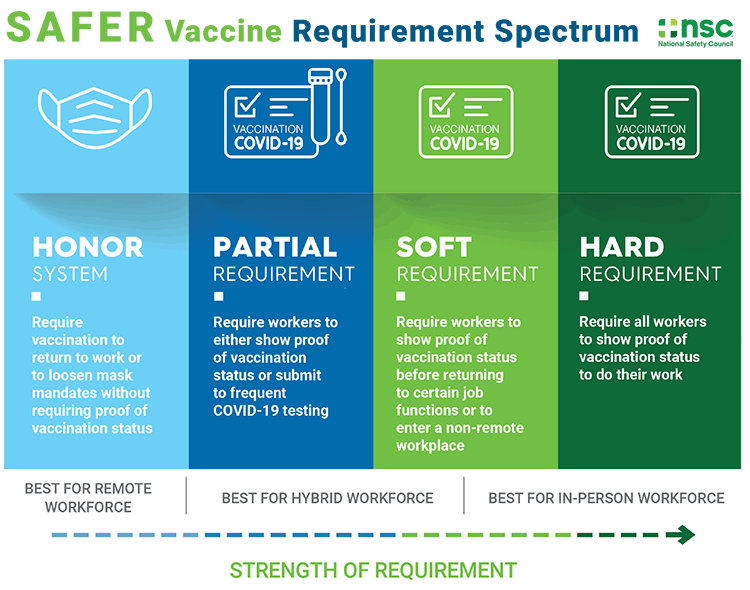10 tips for a safer return to the workplace
Things to think about before bringing workers back

Page 2 of 2
Plan for ‘What if?’
Any reopening plan should include a worst-case scenario, according to Roberts.
“Let’s say you’re a small business with 40 employees,” she said. “If 30 of them test positive for COVID, what are you going to do as far as operations? Having some of those plans in place, if that were to happen, will help ensure your business can still function.”
Considerations include a testing plan – along with who pays for it – and determining the need for testing close contacts and contact tracing. Employers also should plan for time off to allow infected workers to recover.
Monitor mental health
For workers, this means knowing when they need a break and asking for time off.
“Everyone is having a hard time with COVID-19,” Roberts said. “You need that level of comfort where you can say, ‘I need a mental health day.’ If we’re not taking care of ourselves, we’re not going to be able to effectively work.”
As an employer, you can play a significant role in promoting mental health by allowing – and encouraging – workers to openly voice concerns and seek out mental health services.
Review safety basics
If workers have been remote for an extended period, a safety refresher may be in order. That means, according to Roberts, covering topics such as tornado and fire drills, parking lot safety, and safety for workers who must travel. “It’s important to review some of those policies and guidelines that you’ve had in place but haven’t had to deal with because so many people have been working from home or in a different environment,” she said.
Take a stand on vaccine requirements
As the delta variant drove up cases, hospitalizations and deaths across the country over the summer, vaccine and testing requirements became an even more critical decision for employers and a key concern for employees returning to the workplace.
On Sept. 9, President Joe Biden announced that OSHA will develop an emergency rule that will require employers with at least 100 workers to “ensure their workforces are fully vaccinated or show a negative test at least once a week.”
In a statement issued two weeks before that announcement, NSC called on all employers to implement a COVID-19 vaccination requirement for workers.
“It’s clear COVID-19 has and will continue, perhaps indefinitely, to affect the way we live and work,” NSC President and CEO Lorraine M. Martin said in the statement. “Employers must put worker health and safety first. That begins with prioritizing vaccination.”
But what does that process entail?
For employers who decide to require vaccination, a requirement spectrum infographic published by SAFER (see below) outlines four different levels:
Honor system: Vaccination is required to return to work or to loosen mask mandates without requiring proof of vaccination status. (Best for remote workforces.)
Partial requirement: Workers must show proof of vaccination status or submit to frequent COVID-19 testing. (Recommended for a hybrid work arrangement.)
Soft requirement: Workers must show proof of vaccination status before returning to certain job functions or enter a non-remote workplace. (Designed for either hybrid or in-person work.)
Hard requirement: All workers must show proof of vaccination status to do their work. (Best for an in-person workforce.)
In its vaccine requirement guide, SAFER spells out considerations surrounding vaccine requirements, such as the costs of not having vaccinated workers and the feasibility of workers receiving a shot(s).

Dig into the resources
Numerous online resources can serve as a guide for various work settings. OSHA, for example, features updated information about protecting workers on its website, while CDC’s COVID-19 resources include a “Workplaces and Businesses” webpage.
SAFER resources include six tip sheets on topics including masking policies, hybrid workforces and safety concerns as operations expand.
NSC and the Health Action Alliance have partnered to create an online decision tool for business leaders. The tool presents employers with eight questions to consider and explains key aspects of each answer.
“All of these are different things you have to think of,” Roberts said. “The tool is a big decision tree.”
Post a comment to this article
Safety+Health welcomes comments that promote respectful dialogue. Please stay on topic. Comments that contain personal attacks, profanity or abusive language – or those aggressively promoting products or services – will be removed. We reserve the right to determine which comments violate our comment policy. (Anonymous comments are welcome; merely skip the “name” field in the comment box. An email address is required but will not be included with your comment.)

